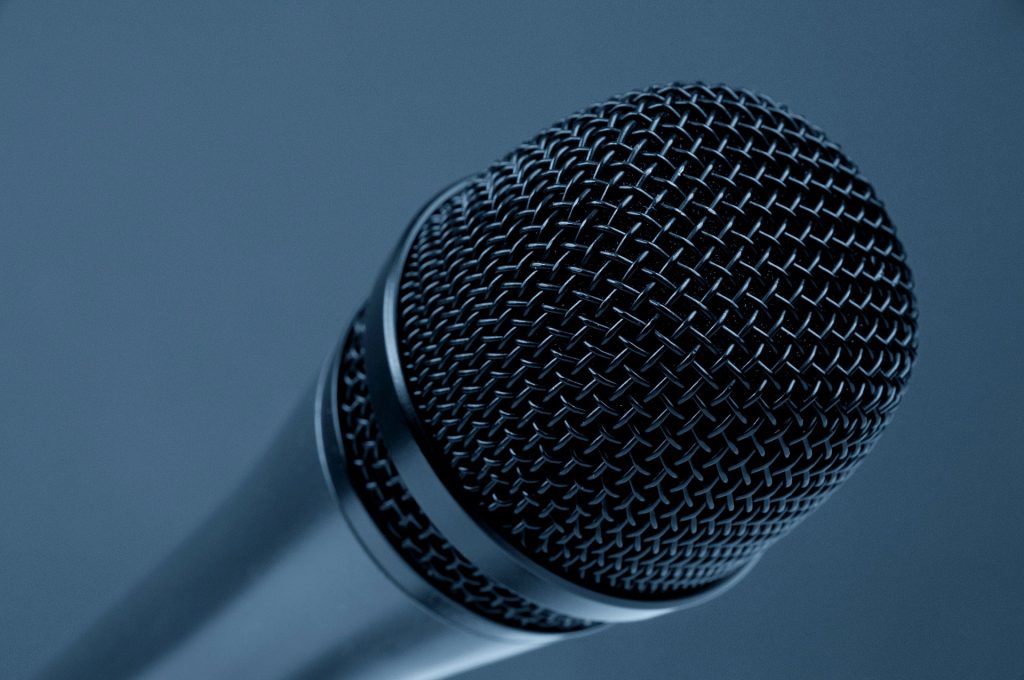Did you ever wonder why some speeches are better than others? Some speakers just know how to dress up, open up a speech, use their body language, and leave us wanting more at the end. But how do they do it?
As a member of BigSpeak Speakers Bureau for over 20 years, I’ve learned a thing or 35 from watching, coaching, and working with the best business and keynote speakers from all over the world.
If you want to speak well, you need to master these six areas: dressing for success, managing stage fright, mastering body language, grabbing the audience’s attention, closing with a bang, and avoiding speech-killing phrases.
If you follow these 35 tips, I promise you’ll be delivering memorable and successful speeches in no time.
Dress for Speech Success


- Find out the dress code
Ask event planners about the dress code. Find out whether there are specific requirements for men and women in advance.
- Dress above average
When selecting your outfit, keep this rule of thumb in mind: dress as well, or slightly better, than your audience.
- Stand out from the stage
The environment of the venue is also worth a second thought. After all, that killer black dress won’t look as good if you’re standing in front of a black backdrop.
- Give yourself attire options
If you’re traveling, pack multiple outfits and accessories with varying degrees of formalness. Conference events, in particular, can range from highly formal to extremely casual.
- Dress comfortably
Feeling comfortable is even more important than color choices and heel height. With the right outfit, you’ll be free to deliver your speech with enthusiasm and move around the stage with passion.
Manage Your Stage Fright

- Master your topic
Master the topic before your speech by discussing your area of expertise in casual social settings, such as a dinner party or in the office break room. Spontaneously discussing your topic will help you to detect gaps in your knowledge, while also building confidence and fluency in your speech patterns.
- Bring a list of bullet points
On the day of your speech, bring a list of bullet points for quick reference, or even a full text of your speech, just in case you forget.
- Get off to a good start
Getting started is typically the hardest part for most orators. Memorize the first three lines of your speech to put yourself. Before you know, you’ll be halfway through your speech and feeling at ease.
- Breathe
Use deep breathing techniques prior to going out on stage. The “4-7-8” method is particularly helpful: inhale through your nose for the count of four, hold your breath for the count of seven, and exhale completely through your mouth for the count of eight. Repeat this three times and you will have noticeably calmed your nerves.
- Redefine fear
Trembling hands is actually a dose of adrenaline preparing you for the challenge you’re about to take on. Redefine this fear as what it really is: a positive mood enhancer that strengthens your resolve and narrows your focus.
- Focus on the audience
Zero in on something other than your racing thoughts. Connect with the audience by shaking hands and partaking in warm banter before your speech. Or latch on to a visual cue. Pay attention to the red jacket in the last row, or watch a pair of boots tapping on the floor.
Practice Good Body Language

- Make purposeful eye contact
Connect with your audience by making meaningful eye contact. You’ll come off as cool, collected, and personable. Avoid simply locking onto one person in the front row for five straight minutes. Move around the room and try to make a connection with as many people as possible.
- Use engaging facial expressions
Your countenance needs to match the emotional message you’re sending. If you make a joke, lead with a smile. If you ask a direct question, look at your audience not the floor. If you’re giving a serious lecture, practice in a mirror to ensure to look pensive rather than furious.
- Gesture appropriately
People gauge your emotions by looking at your hands before you even begin to speak. By gesturing occasionally and decisively with open palms, you can indicate to your audience that you are confident and invested in the message of your speech. Be careful not to ball your hands into fists, which can convey fear or aggression. Open palms, on the other hand, communicate honesty and self-assurance.
- Limit the fidgeting
Unnecessary hand motion will distract from what you have to say. When you’re not making deliberate gestures, keep your arms still, either resting at your waist or by your side.
- Move deliberately
A few steps in one direction or another from the podium will make it seem as though you’re addressing the entirety of your audience. Just don’t go overboard with the pacing. Swinging back and forth across the stage like a pendulum conveys nervousness and uncertainty.
Grab Your Audience’s Attention

- Give your audience an exclusive experience
Let your audience know the talk is just for them. Start your speech off with an ingenious insider trick or a mind-blowing statistic from a study that hasn’t yet been released to the public.
- Crack a joke to break the ice
Did you hear the one about the boring presentation? No, you probably didn’t. Make them laugh with that first line. The audience will like you, and they’ll likely retain the actual substance of your presentation, too.
- Use a prop to make your point
If you set a massive pitcher down on the podium, your audience is going to wonder why. Including a prop will not only provoke curiosity, but it can dramatically make your point.
But don’t just use a prop to get attention. It needs to serve a purpose—otherwise, it’ll only distract from your message.
- Make a creative comparison
Use an analogy to showcase your capacity for analytical thought and provide the audience with context on a subject that might otherwise be new to them.
- Involve your audience
Nothing gets an audience’s attention like including them in the presentation. Participation can be encouraged with a question, an imagined scenario, or a makeshift poll that requires audience members to raise their hands in response.
Avoid Speech-Killing Phrases

- “I’m tired”
Whether you were up all night fretting about your speech, out drinking, or jet-lagged, there’s no reason to announce it (especially if you’re hungover). Great public speakers push through and deliver a great speech regardless of extenuating circumstances.
- “I’m nervous”
Experiencing anxiety before a public speaking engagement is perfectly normal, but using it as an excuse or framing it as a negative does you no good. See the tips on dealing with fear.
- “I’ll make this quick”
The audience has made the decision to invest their time in your presentation, so telling them you’ll “make it fast” not only devalues their investment—it’s most likely a promise you can’t keep.
- “Weren’t you listening?”
Never scold an audience member—Even if you very clearly answered someone’s question in an earlier slide, and they very clearly weren’t paying attention. Great lecturers are as gracious as they are informative, so remain patient and polite (no matter how irritated you may be on the inside).
- “I’ll come back to that”
If an unexpected question throws you off your rhythm, take advantage of the audience’s curiosity and enthusiasm and go with the flow. Answer directly, and if need be, skip ahead to the corresponding slide.
- “I’m not totally sure, but here goes…”
It’s okay to not know everything—but don’t offer a half-hearted or underdeveloped answer if you’re not sure of the correct response. In lieu of exposing your uncertainty, ask for the inquirer’s contact information and offer to get back to them after you’ve conducted more research.
- “I’m sorry”
A good speaker doesn’t apologize for a minor or perceived mistake; doing so only calls attention to something that would otherwise have gone unnoticed. If an audience member asks you to return to a previous slide for clarification or speak more loudly, you should happily oblige—but don’t draw attention to your misstep.
End Your Speech With A Bang

- Give a sound bite
Distill your message down to a memorable statement (or even a single word or phrase). A simple takeaway is an effective way to communicate the core of your presentation.
- Share a surprising fact
Leaving your audience with a surprising (but related!) fact re-ignites engagement, keeping them interested long after they exit the auditorium.
- Make a call to action
Take advantage of the interest you’ve built with a specific call to action. Whether it’s joining a movement, buying your book, or contacting your organization, clearly communicate the next step that should follow from your presentation, and then inspire your audience to pursue it.
- Tell a story
Engage your audience with a concluding anecdote that ties back to the main points of your presentation to really make them stick (bonus tip: stories make great introductions, too).
- Ask a question
Ending with a question can both spur your audience to action and inspire immediate reflection on the points communicated during your presentation.
- Show an image (or video)
Most people are visual learners, so leverage that natural capacity with a powerful image or video at the end to drive your message home.
- Give “One more thing”
This attention-grabbing tactic acts as a kind of postscript—a final cherry on top of your presentation that can really make it shine, while also indicating that you are, in fact, wrapping up.
Items from this list were previously published in Inc., YFS, Speaker Magazine, and Business2Community.
Ken Sterling is the Executive Vice President at BigSpeak. He holds a Ph.D. from the University of California and an MBA from Babson College. Ken teaches Entrepreneurship, Marketing, and Strategy at UC Santa Barbara. He is a serial entrepreneur, keynote speaker, business consultant, and sales & marketing expert.
Kyle Crocco is an East Coast native and content creator for Big Speak. His career has taken him from authoring the Heroes, Inc series., to living and teaching abroad in France and China, to completing his Ph.D. in Education at the University of California-Santa Barbara. He is also the lead singer in Duh Professors, a local Santa Barbara band.
This article originally appeared on BigSpeak on Jan 7, 2019







